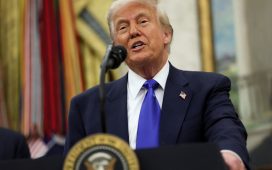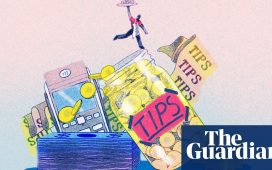Thomas Barwick | Digitalvision | Getty Images
1. Unemployment is at historic lows
The unemployment rate fell to 3.4% in January — the lowest since May 1969. Put another way: The last time the jobless rate was this low, Neil Armstrong hadn’t yet walked on the moon, Bunker said.
In fact, you’d have to go back to October 1953 to find a lower unemployment rate — 3.1%.
The unemployment rate is a single-best labor market indicator for the average American — it offers a holistic look at its strength or weakness and a reliable gauge for potential recession, said Daniel Zhao, lead economist at Glassdoor, a career site.
“The job market is still strong, and workers have opportunities to go out and find a job that’s a better fit for them,” Zhao said.
U.S. employers added 517,000 new jobs in January, handily beating expectations. They added 4.8 million total jobs in 2022, more than twice the roughly 2.3 million average from 2015 to 2019, said Julia Pollak, chief economist at ZipRecruiter.
2. Layoffs are low despite Big Tech
Big technology firms — such as Amazon, Google, Meta and Microsoft — announced mass layoffs in recent weeks. Those job cuts, which affect tens of thousands of employees, prompted fears the carnage would spill over into other areas of the U.S. economy.
However, that doesn’t seem to be happening.
“The thing that strikes me the most about the labor market is there aren’t layoffs,” said Mark Zandi, chief economist at Moody’s Analytics.
The layoff rate has stayed below its pre-pandemic nadir for 22 straight months, according to Job Openings and Labor Turnover Survey data. Workers filed 183,000 new claims for unemployment insurance last week — well below the roughly 245,000 average from 2015 to 2019, according to Labor Department data.
“That is just knock-your-socks-off low,” Zandi said of unemployment claims.
Businesses are reluctant to lay off workers and the labor market is strong enough to rapidly absorb people who do lose their jobs, Zandi said.
Tech jobs also account for a small share of the U.S. workforce: about 4% of total employment in 2020, according to a Deloitte report published in 2021.

3. The ‘great resignation’ chugs along
Workers are still quitting their jobs in historically elevated numbers.
Most workers who quit do so for new jobs; they don’t leave the workforce altogether. Voluntary departures are therefore a proxy for worker confidence — they’re optimistic about their chances of finding a better job elsewhere, economists said.
About 4.1 million people quit in December, according to JOLTS data issued Wednesday.
That figure is a slight cooling from the peak of over 4.5 million in November 2021 — but still well above the pre-pandemic high bar of 3.6 million set in July 2019.
The elevated level of quitting in the pandemic era came to be known as the “great resignation.” In 2022, 50.5 million people quit their jobs — breaking an annual record set in 2021.
4. Hiring has moderated
Hiring remains strong but has been decelerating. The hiring rate and number of new hires have cooled since February 2022; they’re roughly on par with their level in February 2020.
That’s not necessarily a bad sign — the job market was also strong in the runup to the pandemic.
Businesses are adjusting to higher interest rates and the prospects of recession — not necessarily via mass layoffs but instead by hiring less aggressively, Zandi said. Data suggests employers are allowing jobs vacated by quitting workers to go unfilled, he said.
5. Wage growth is high but cooling
Wages are growing at a historically fast pace — especially for those switching jobs. But there’s a cooling trend here, too.
Wages and salaries for private-sector workers grew about 4% in the fourth quarter of 2022, on an annualized basis — above the pre-pandemic pace but down from 6% at the end of 2021, Bunker said. He analyzed Employment Cost Index data issued Tuesday and excluded incentive-paid occupations, which can be volatile.
“The slowdown is definitively here,” Bunker said of wage growth.
Average hourly earnings in January cooled to a 4.4% annual growth rate, according to Friday’s jobs report, falling from 4.6% in December and 5.1% in November.
“It may not be as easy today as it was a year ago to find a higher-paying job,” Zhao said. “But there are still opportunities out there.”
6. The labor market is ‘out of balance’
This cooling in pay growth is by design. The Federal Reserve is aiming to reduce wage growth to what it sees as a more sustainable level — one that doesn’t fuel high inflation.
Fed Chairman Jerome Powell on Wednesday said the labor market was “very, very strong” due to job creation and wages — but also noted that it was “out of balance.” Largely, that’s because labor demand among employers “substantially exceeds” the supply of available workers, Powell said, which has underpinned fast-rising wages.
The Fed is trying to soften the labor market without triggering a recession — a so-called “soft landing.”
Reducing wage growth to 3.5%, as measured by the Employment Cost Index, would be consistent with the Fed’s long-term 2% inflation target, Zandi said.









